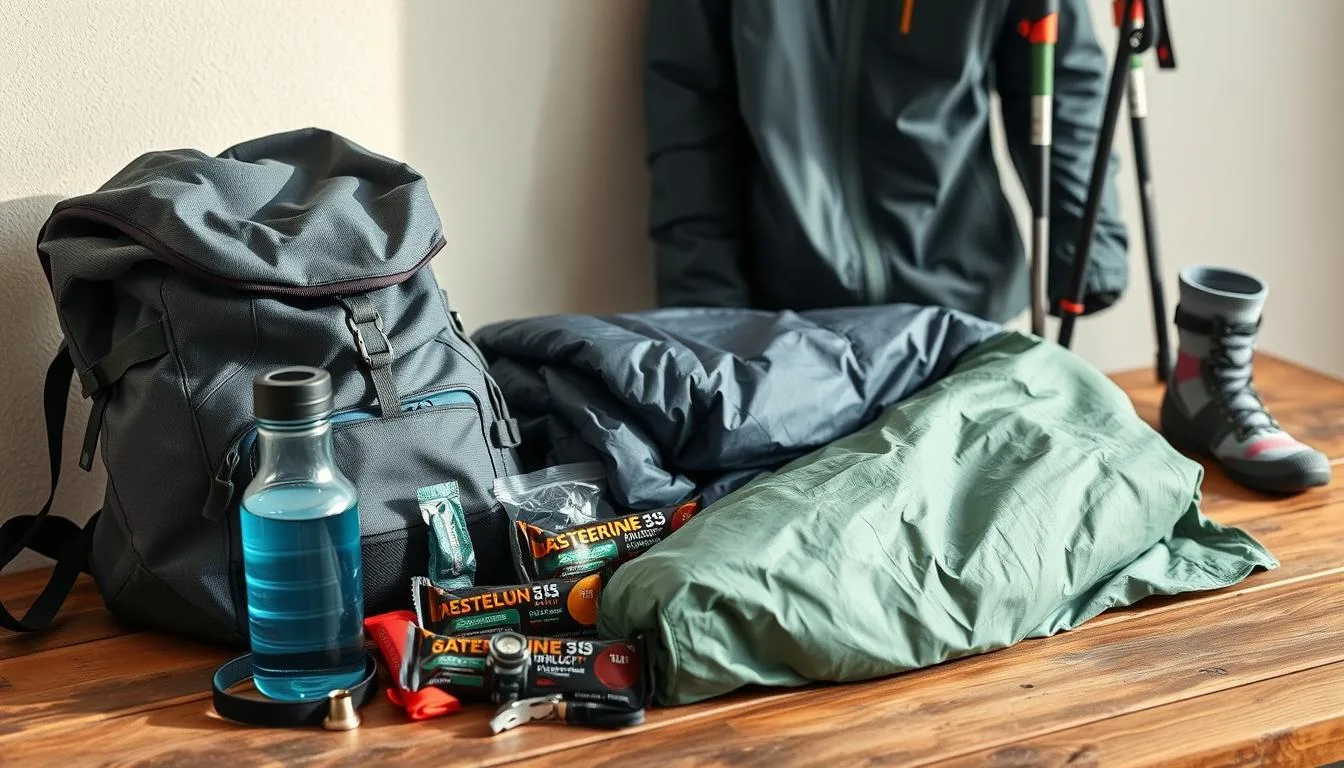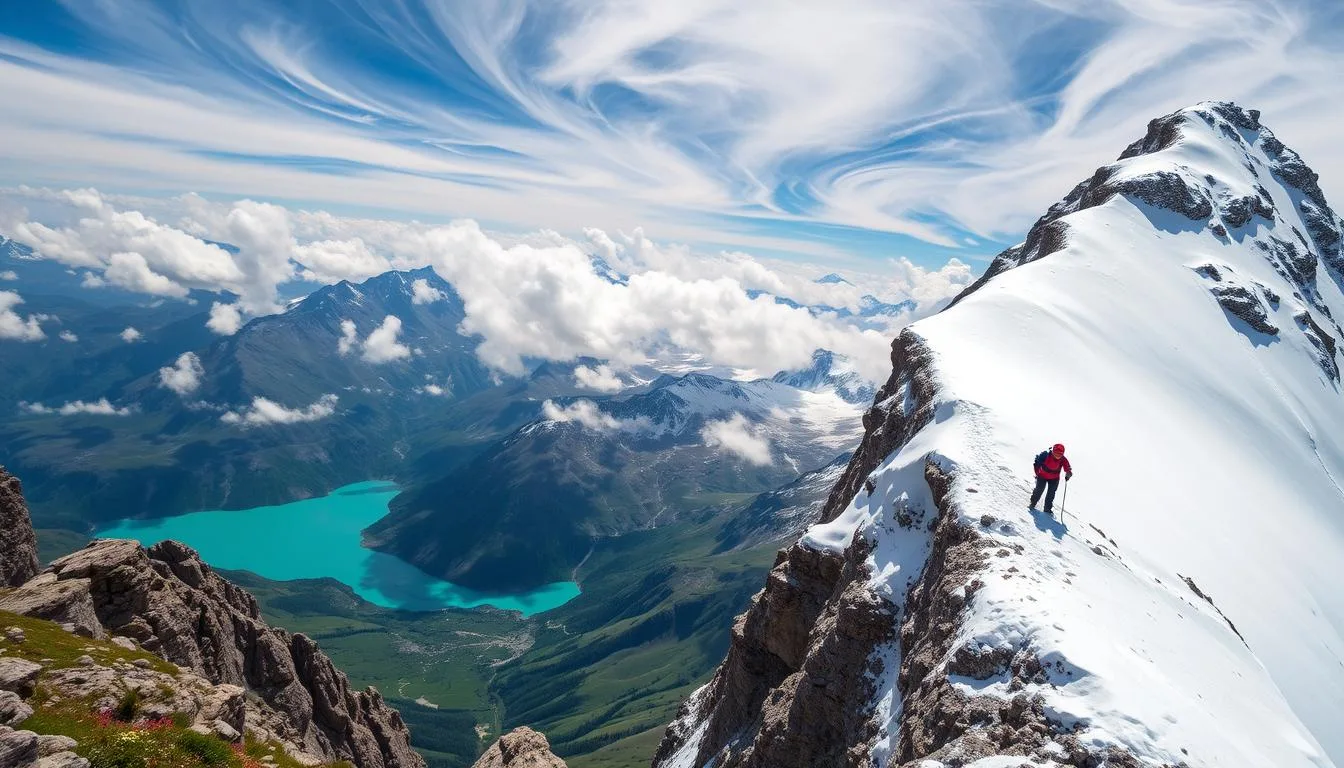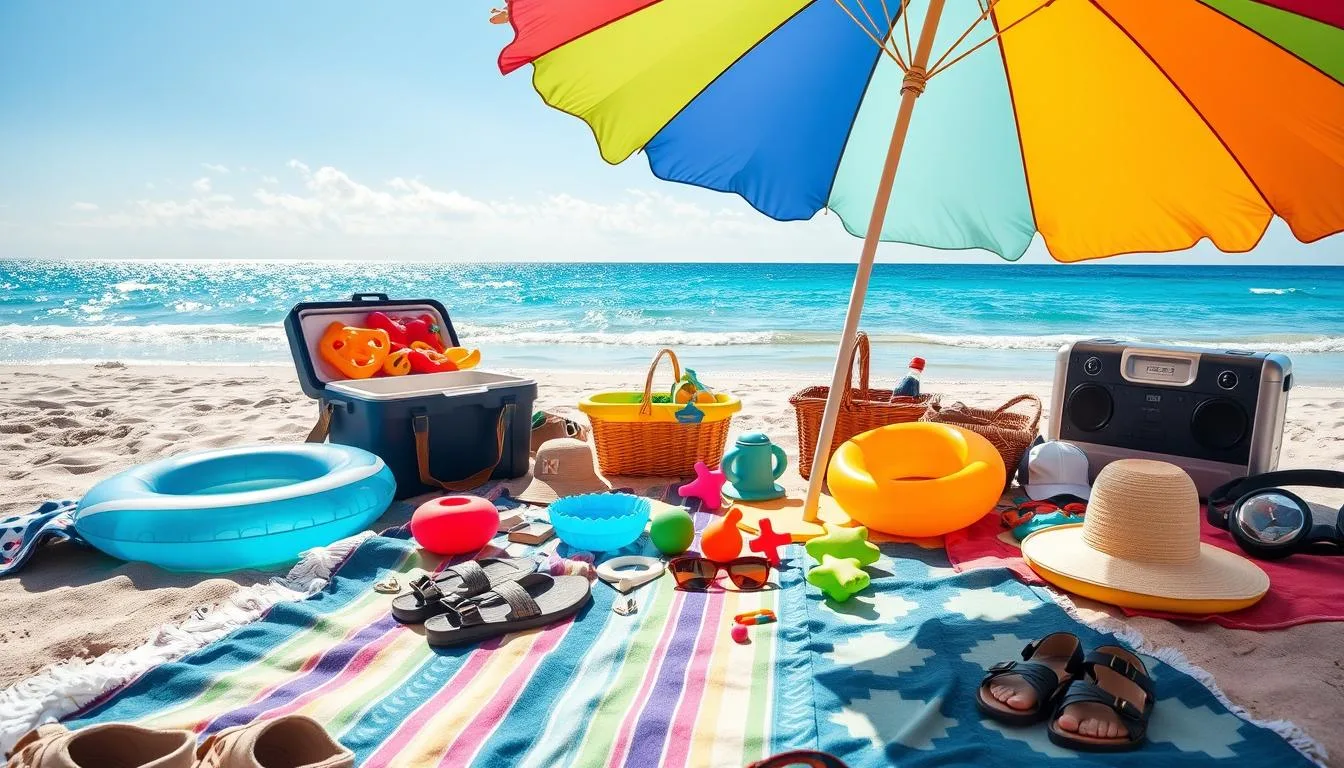Every trail step whispers freedom. My ultralight hiking journey began with a simple idea: less weight equals more adventure. Minimalist camping changed my backpacking from a tough trek to an exciting exploration.
Ultralight hiking gear is about smart choices that boost your outdoor experience. Brands like Gossamer Gear and Waymark Gear have changed backpacking essentials. They create innovative solutions that keep your pack light and perform well.
My backpack now weighs ounces but has all I need for wilderness survival. The Waymark Gear EVLV 35L ultralight backpack weighs just 13.9 oz. It shows how smart design can replace extra bulk.
Modern ultralight gear takes a smart approach to outdoor adventure. It cuts weight while boosting comfort and function. Ultralight principles can greatly improve your outdoor trips.
This guide will explore how to travel light. You’ll learn how picking the right gear can change your wilderness journeys.
Understanding Ultralight Backpacking Fundamentals
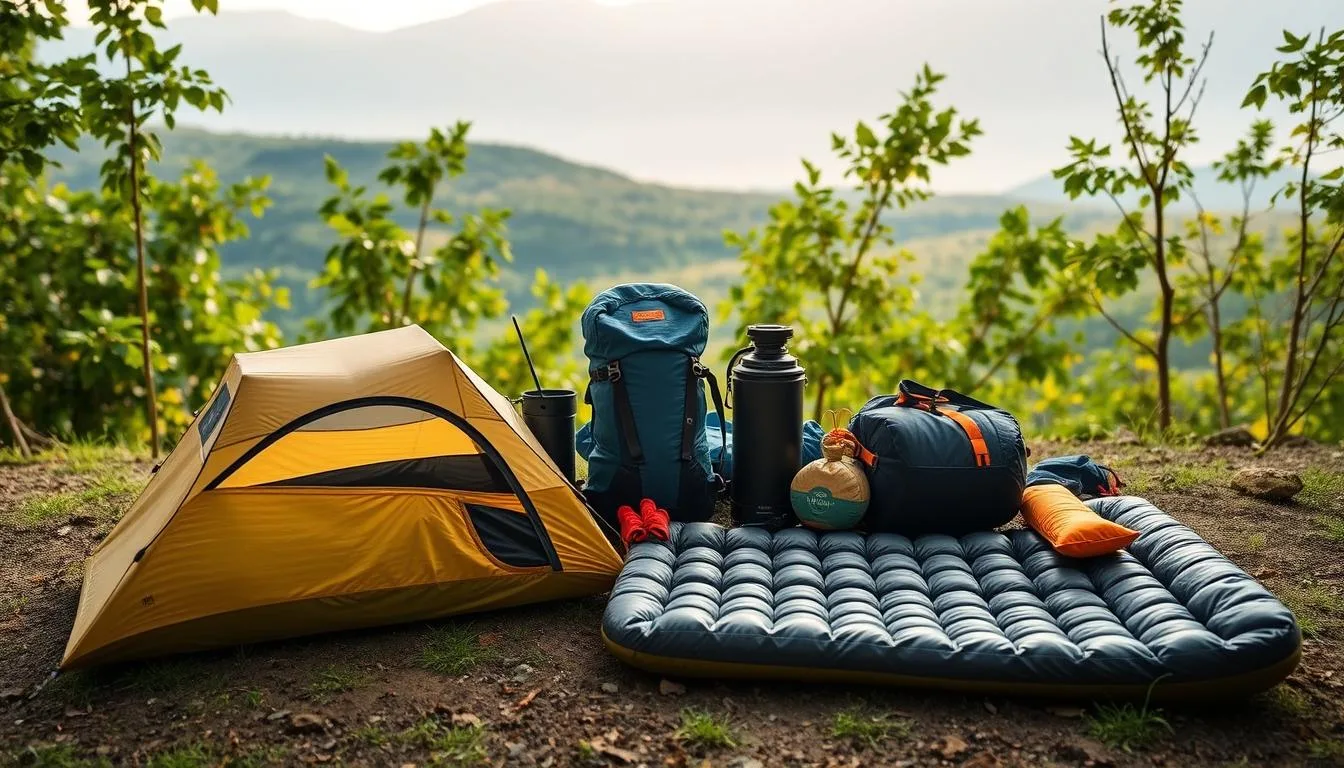
Ultralight backpacking is a game-changer for wilderness exploration. It’s all about smart gear choices and weight management. The goal? Carry less and experience more.
My journey taught me that success comes from strategic packing. This approach lets you fully enjoy nature without being weighed down.
What Defines Ultralight Hiking
Ultralight hiking has specific weight thresholds. Your pack should weigh 10 pounds or less, not counting food and water.
Key items include lightweight tents, compact sleeping bags, and trail runners. These components are crucial for a minimalist approach.
- Lightweight base weight: 10 pounds or less
- Ultralight base weight: 5 pounds or less
- Gear focus: Maximum functionality, minimum weight
Benefits of Going Ultralight
Ultralight hiking offers amazing advantages. You’ll experience less physical strain and increased mobility on the trail.
With a lighter pack, you can cover more ground without getting tired. This means more time to enjoy nature.
“Travel light, travel far” – An ultralight hiker’s mantra
Weight Categories and Targets
Knowing weight categories helps you choose gear wisely. Every ounce counts when selecting trail runners or sleeping bags.
Here are my recommended weight targets:
- Backpack: Under 2 pounds
- Sleeping system: Under 2 pounds
- Shelter: Under 2 pounds
Lightweight tents and minimalist gear can transform your hiking experience. You’ll move faster and more comfortably through the wilderness.
With the right ultralight setup, you’ll enjoy nature like never before. Get ready for amazing adventures on the trail!
Essential Skills for Ultralight Success
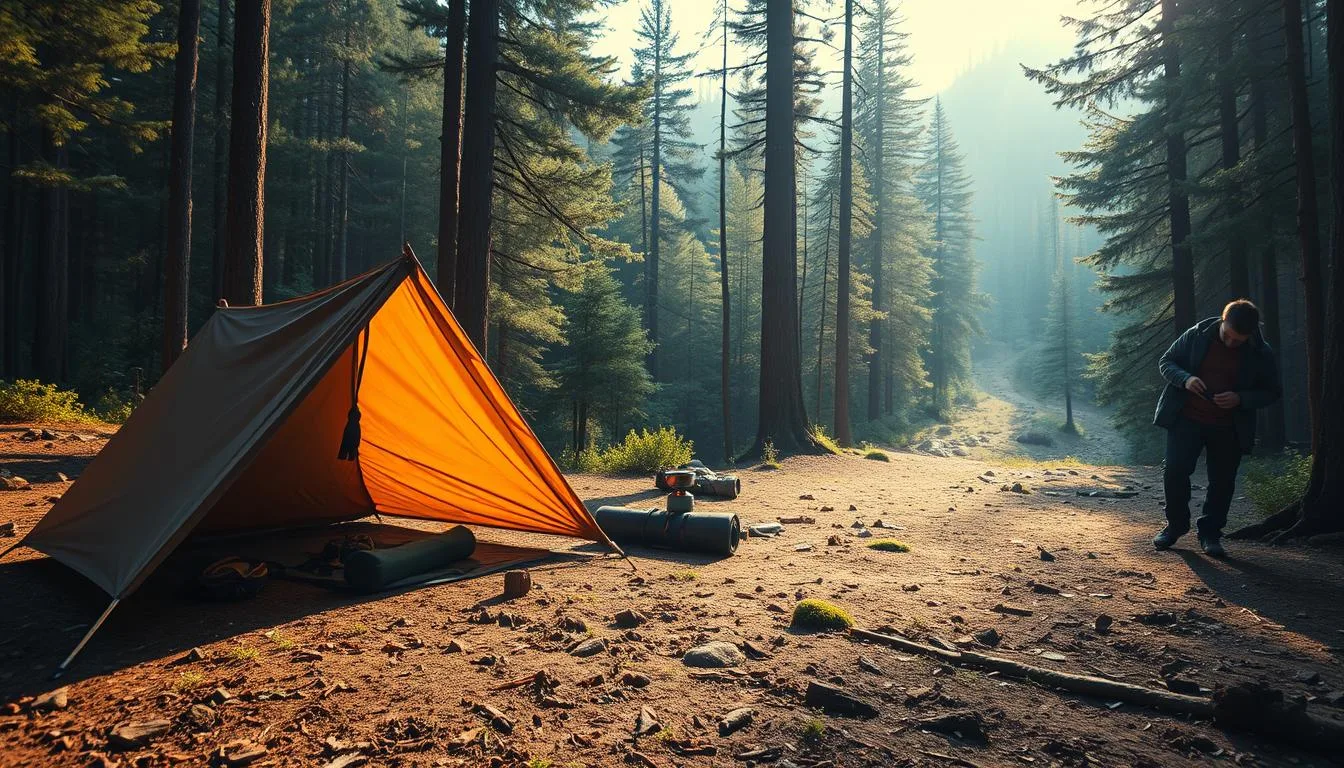
Ultralight backpacking requires more than just lightweight gear. It’s about developing crucial skills for the wilderness. These skills can make or break your backcountry experience.
To excel in ultralight backpacking, focus on these key areas:
- Precise campsite selection techniques
- Efficient shelter setup strategies
- Advanced temperature management
- Lightweight navigation skills
- Minimal resource utilization
Reducing pack weight needs a strategic approach to wilderness survival. Many hikers quit long trails due to poor preparation and lack of skills. In fact, 73 out of 100 hikers abandon their journey for these reasons.
Skill is the ultimate ultralight tool – lighter than any piece of equipment.
Critical skills for minimalist camping include:
- Water management: Using lightweight filters like Sawyer Squeeze
- Efficient campsite setup with minimal equipment
- Navigation using topographic maps and compact compass
- Thermal regulation with strategic layering
- Waste management and environmental preservation
These techniques can transform your backpacking experience. You’ll find your adventure more enjoyable and sustainable. Prioritizing skills over gear leads to a truly liberating outdoor journey.
Ultralight Hiking Gear: Core Components
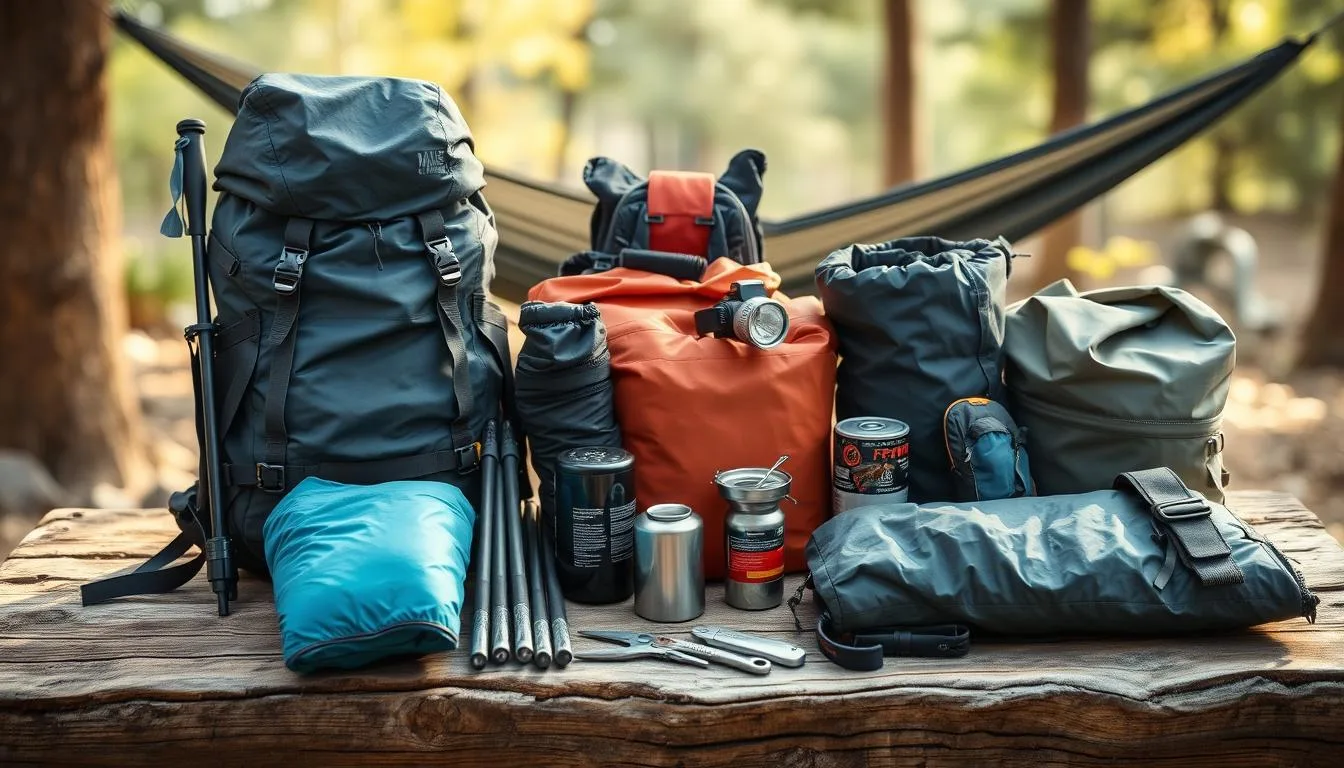
Choosing the right gear is crucial for ultralight hiking success. Every ounce counts when trekking through the wilderness. Smart gear picks can boost your comfort and performance significantly.
An ultralight hiking setup needs three key systems. These are shelters, sleep systems, and storage solutions.
Lightweight Shelters for the Trail
Lightweight tents come in many forms. Here are some top ultralight shelter options to consider:
- Gossamer Gear Solo Tarp (eliminates condensation)
- UltaMid Pyramid Tent (available in 2-person or 4-person configurations)
- Flat tarps for extreme weight minimalists
Compact Sleeping Bags and Comfort
Compact sleeping bags are vital for warmth without bulk. Check out these top picks:
- Therm-a-Rest NeoAir XLite (12-16 oz)
- Enlightened Equipment Quilt (25 ounces)
- Feathered Friends Hummingbird 20-degree bag
Backpacks and Efficient Storage
The right backpack can change your hiking experience. Consider these ultralight options:
- Granite Gear Crown3 40L
- Gossamer Gear Kumo
- Gossamer Gear Murmur
Rain Gear and Clothing Strategies
Ultralight rain gear should be waterproof and breathable. Look for jackets weighing 6-8 ounces. These provide essential protection without limiting movement.
Ultralight hiking isn’t just about cutting weight. It’s about keeping function and comfort in various trail conditions.
Smart Food and Water Systems
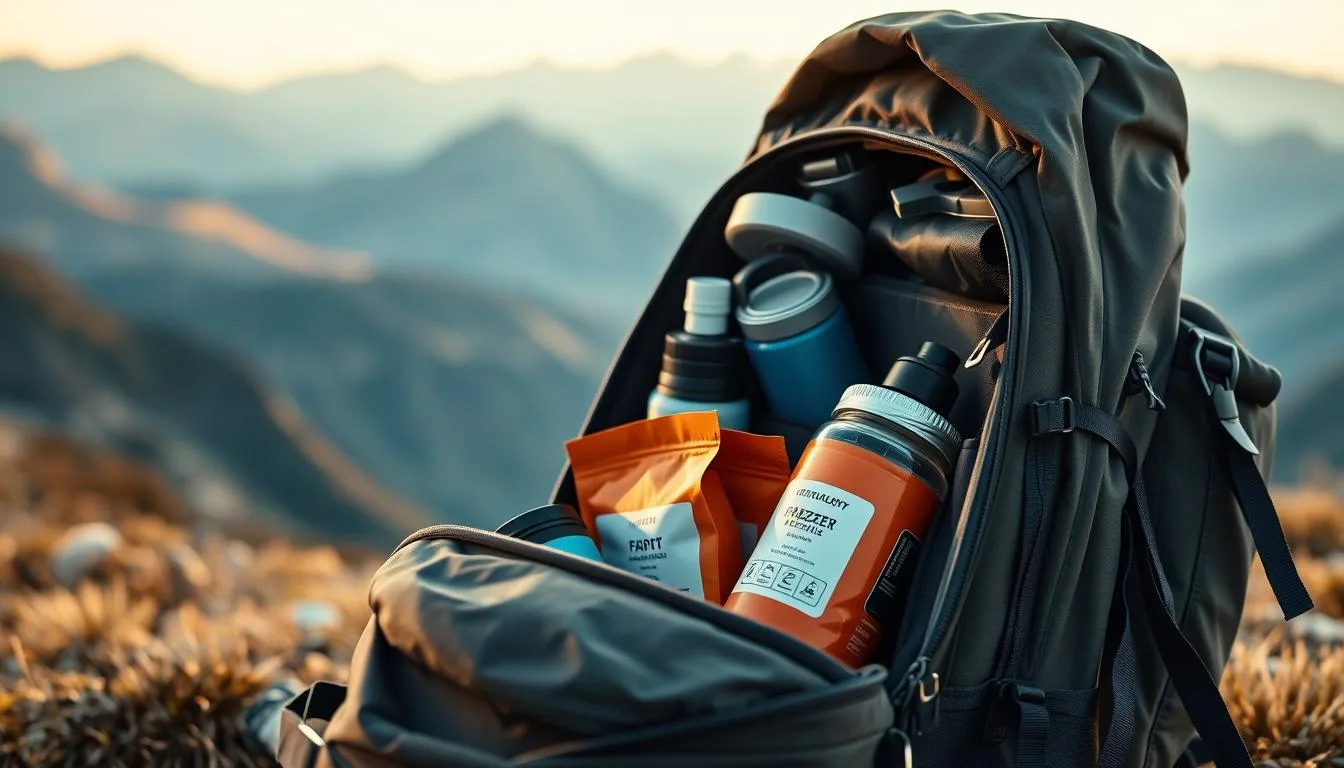
Smart food and water planning is key for ultralight backpacking success. My approach balances minimal weight with proper nutrition and hydration. Dehydrated food helps create an efficient, lightweight meal strategy.
Meal planning needs strategic thinking. I suggest organizing food into daily bags for easy access. This helps with portion control too.
Here’s my lightweight meal strategy:
- Breakfast: Lightweight instant oatmeal packets
- Snacks: Nutritious trail mix and KIND bars
- Dinner: Freeze-dried meals requiring minimal water preparation
Water management is just as important. Compact water purifiers ensure safe drinking without extra weight. The CNOC Vessica container offers comfort and reduces taste issues.
My daily food weight goal is about 14.2 ounces. For a week-long trek, that’s 10.4 pounds total. I use a small 1-liter pot and stove for boiling water.
Ultralight backpacking is about smart choices, not compromise.
For water containers, I prefer Nalgene HDPE bottles. They’re tough and reliable. Water purifiers are crucial for treating water from natural sources.
- Total daily food weight: Under 1 pound
- Water storage: Lightweight, collapsible containers
- Purification: Chemical or lightweight filter systems
Pro tip: Always prioritize nutrition and hydration while keeping your pack as light as possible.
Navigation and Safety Equipment
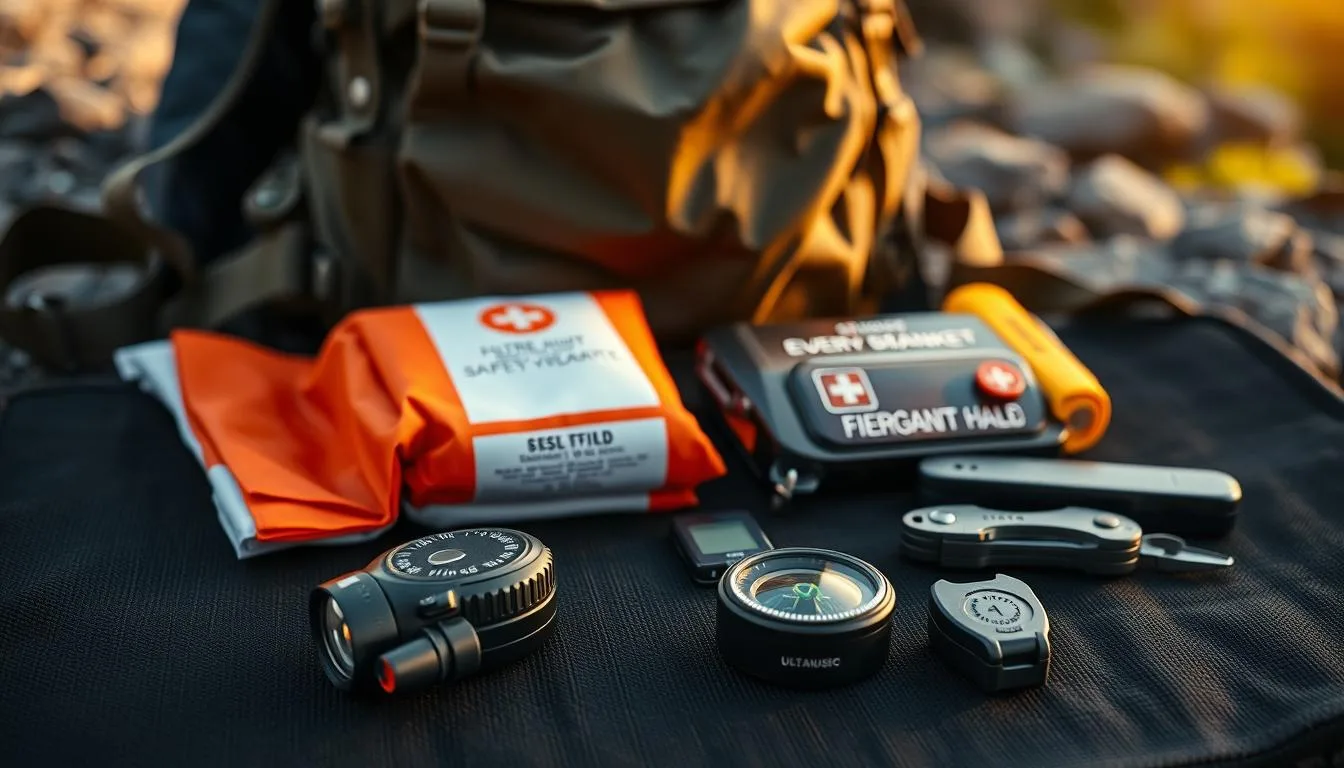
Smart navigation and safety gear are crucial for minimalist camping adventures. They can make or break your trip. Ultralight backpackers must balance essential safety equipment with weight limits.
Lightweight Navigation Tools
Digital navigation solutions are now essential for backpacking. They greatly reduce weight. I suggest using multiple navigation methods for safety.
- Lightweight topographic digital maps
- Smartphone GPS applications
- Compact compass
- Waterproof paper map backup
Emergency Gear Essentials
Minimalist camping needs smart emergency prep. My ultralight safety kit has key items for unexpected situations.
- Compact first aid supplies
- Multi-function headlamp
- Emergency firestarter
- Pocket multi-tool
- Lightweight emergency shelter
“Preparedness weighs less than regret” – Wilderness Safety Principle
Communication Devices
Staying connected in remote areas is vital. I focus on lightweight communication options for emergencies. These devices provide help without adding unnecessary weight.
- Satellite messenger
- Personal locator beacon
- Backup battery pack
- Safety whistle
Choosing Weather-Appropriate Gear
Picking the right rain gear is crucial for ultralight hiking. Smart clothing choices protect you from unpredictable weather without adding extra weight. Your outdoor experience depends on these decisions.
A good layering system helps manage changing weather. Here are three key components to consider:
- Base layer: Moisture-wicking synthetic or merino wool material
- Middle layer: Lightweight fleece or insulating puffer
- Outer layer: Ultralight rain jacket or versatile poncho
For ultralight hiking, choose gear that serves multiple purposes. A lightweight poncho can be both rain protection and a ground sheet. Look for rain jackets weighing 5-6 ounces with good weather protection.
When selecting weather-appropriate gear, consider these factors:
- Fabric weight and breathability
- Moisture-wicking capabilities
- Versatility across different environments
- Packability and compression
Brands like Montbell and Outdoor Research offer great ultralight rain gear. They balance protection, weight, and comfort well. Your goal is to stay dry while keeping your pack light.
Cost-Effective Ultralight Solutions
Building an ultralight hiking gear collection doesn’t have to be expensive. Smart hikers balance quality and affordability when choosing backpacking essentials. They know where to invest and where to save money.
Smart gear selection can improve your backpacking experience without overspending. Let’s explore practical strategies for creating an affordable ultralight kit that performs well.
Budget-Friendly Options
You can find excellent ultralight hiking gear without spending too much. Here are some wallet-friendly alternatives to consider:
- Mountainsmith Zerk 40 backpack at $219 offers great value with 51L volume
- Mylar tarps starting at $1 provide emergency shelter options
- Ridge Merino Solstice Hoodie weighing just 9 oz provides excellent versatility
- Darn Tough Hiker socks offer durability at an affordable price point
DIY Gear Modifications
Making your own ultralight gear can greatly reduce costs. Simple changes like creating a homemade alcohol stove save money while keeping your pack light.
Where to Invest vs. Save
Strategic spending is crucial in ultralight backpacking. Invest in critical items like quality sleeping systems, durable backpacks, and reliable footwear.
Save on temporary shelters, basic clothing layers, and non-critical accessories. A $300 down quilt lasting 10 years costs just $30 annually, making it a smart investment.
Conclusion
Ultralight hiking gear offers a new way to enjoy outdoor adventures. It’s about smart choices, not sacrificing comfort. Every ounce counts, and the right gear can boost your hiking performance.
Ultralight gear is more than just lightweight equipment. It’s a philosophy of efficiency and connection with nature. Top brands create high-performance gear without extra weight.
Switching to ultralight gear takes time and practice. Replace heavy items slowly, using a scale to track progress. Begin with key items like rain jackets and sleeping bags.
Minimalist camping is a skill you develop gradually. It’s not something that happens overnight. Practice and patience are key to mastering this approach.
Ultralight hiking pushes you to grow and understand your limits. It makes you think about your gear and skills differently. This method can deepen your connection with the wilderness.

